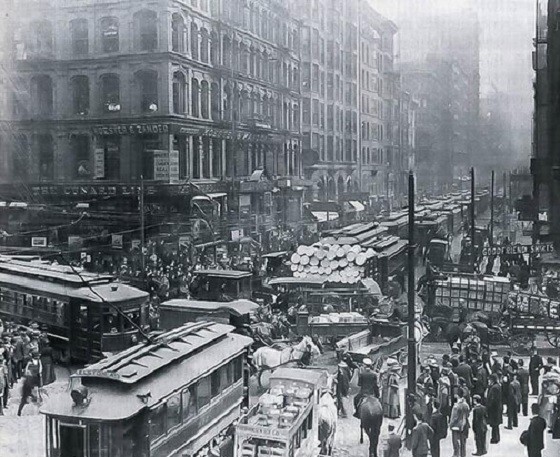
Urban policy-makers generally favour congestion pricing but regard it as one of those “good ideas” that’s just too hard politically at the moment. It’s just around the corner, but it won’t be here today.
It looks like it could be a very long wait, though, if public reaction to some of the measures in the Federal Budget – especially indexation of fuel excise and the $7 GP co-payment – is anything to go by.
While there’s a deeper concern about the ideological agenda underlying some of the Budget initiatives, the key instrumental objection to these two is the disproportionate financial impact they’ll have on lower income groups.
That’s also the main objection to congestion pricing. It would impose a charge on motorists to reflect the negative externalities associated with driving in clogged traffic; principally delay, but also pollution and emissions.
But there’d be a negative equity effect because congestion charges, like taxes and prices, don’t distinguish between buyers according to their income. Congestion charging would make driving in the peak less affordable for those on lower incomes; they’d consequently find it more expensive to access important opportunities like employment.
That’s a very important issue that must be addressed. Now that the practical constraints have largely been overcome by technology (e.g. transponders), the impact on drivers’ pockets (and not just the poorest ones) is the main practical factor limiting implementation of congestion pricing.
But in terms of making good urban policy, it’s important not to throw the baby out with the bathwater. Congestion pricing has many virtues.
The main one of course is that it reduces travel times by keeping traffic moving. Speeds would increase significantly for the rest of the traffic if just 5% – 10% of existing motorists were induced to change their travel pattern by the charge. (1)
In 2007, the Bureau of Infrastructure, Transport and Regional Development projected the deadweight loss of traffic congestion in Australian urban areas at around $20 billion p.a. by 2020.
Congestion charging has other benefits too. Most drivers deterred by the charge will shift their trip to a non-congested period, but some will use other modes like public transport, walking or cycling instead.
The higher cost of driving in peak periods make these alternative modes relatively more attractive. Indeed, it’s hard to see any of them achieving a quantum leap in mode share unless car travel is made comparatively more expensive in terms of dollars and/or time.
By reducing demand, congestion pricing would also lessen the warrant for building new motorways to increase road capacity. Major projects like Sydney’s WestConnex and Melbourne’s East-West Link might not be justified at all if demand were modified by charging, or might at least be delayed for years.
Australian cities already have huge street networks and extensive freeway systems with plenty of spare capacity. They’re only congested in peak times because of a management failure; politicans aren’t prepared to price roadspace.
Congestion charging would also provide an additional, ongoing source of revenue for improving transport infrastructure. Indeed, spending the proceeds on better roads and public transport seems to be a necessary condition for getting public acceptance.
Given these benefits, the negative equity effects shouldn’t automatically rule out congestion pricing. Many trip-makers at all levels of income will value the option of paying more for an important trip rather than sitting in deadlocked traffic e.g. picking up the kids from childcare after work.
As I’ve noted before (Are politicians serious about “fixing” traffic congestion?), we already ration use of other scarce resources – like public transport, water, electricity and gas – through user charges.
In many cases, utilities apply a progressive tariff i.e. the price increases as consumption increases. Many charge a higher price in peak periods than in non-peak periods to minimise the cost of providing capacity for relatively short periods of demand.
There are also innumerable government regulations that raise the prices of products and services for all consumers irrespective of their income e.g. regulations protecting animal welfare, the environment, workplace safety, and so on.
One way to address the equity effects of congestion charging is to do what utilities traditionally do; provide a concessional tariff for those of limited means.
Another way is to compensate lower income travellers directly through the tax and transfer system. Calculations by the Grattan Institute in relation to fuel excise indexation suggest the cost could be modest.
The Institute estimates the poorest 20% of households could be compensated for indexation of fuel excise if just 8% of the additional revenue raised was returned to them through the tax-transfer system. Reintroducing fuel excise indexation would hit the bottom 20 per cent of households hardest. These households spend about 6 per cent of their income on fuel. The richest 20 per cent of households only spend about 2 per cent.
It’s also important to consider the equity effects in the context not only of who pays but also who benefits from how the revenue is spent. Lower income travellers might be better off if the revenue is used to fund new transport infrastructure and/or services targeted primarily at improving their access to key destinations.
Charging motorists to drive in peak periods isn’t the only measure needed to address traffic congestion and might not even be the main one, but it’s likely to be a part of an effective package. The general distaste for the equity implications of the Budget shouldn’t automatically rule out further price/tax increases in all cases.
________________________
-
Only one third of AM peak motorised trips in Melbourne are for the journey to work and 17% are for recreation and shopping purposes. The pattern for Sydney is similar.








Crikey is committed to hosting lively discussions. Help us keep the conversation useful, interesting and welcoming. We aim to publish comments quickly in the interest of promoting robust conversation, but we’re a small team and we deploy filters to protect against legal risk. Occasionally your comment may be held up while we review, but we’re working as fast as we can to keep the conversation rolling.
The Crikey comment section is members-only content. Please subscribe to leave a comment.
The Crikey comment section is members-only content. Please login to leave a comment.